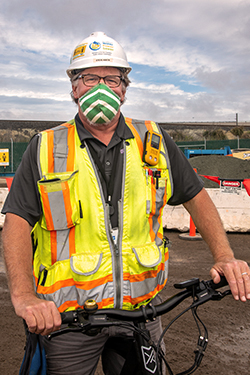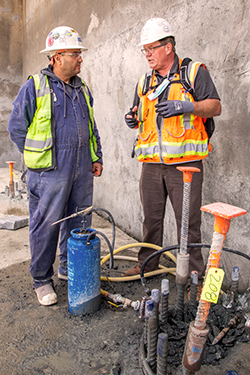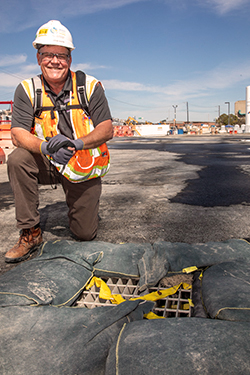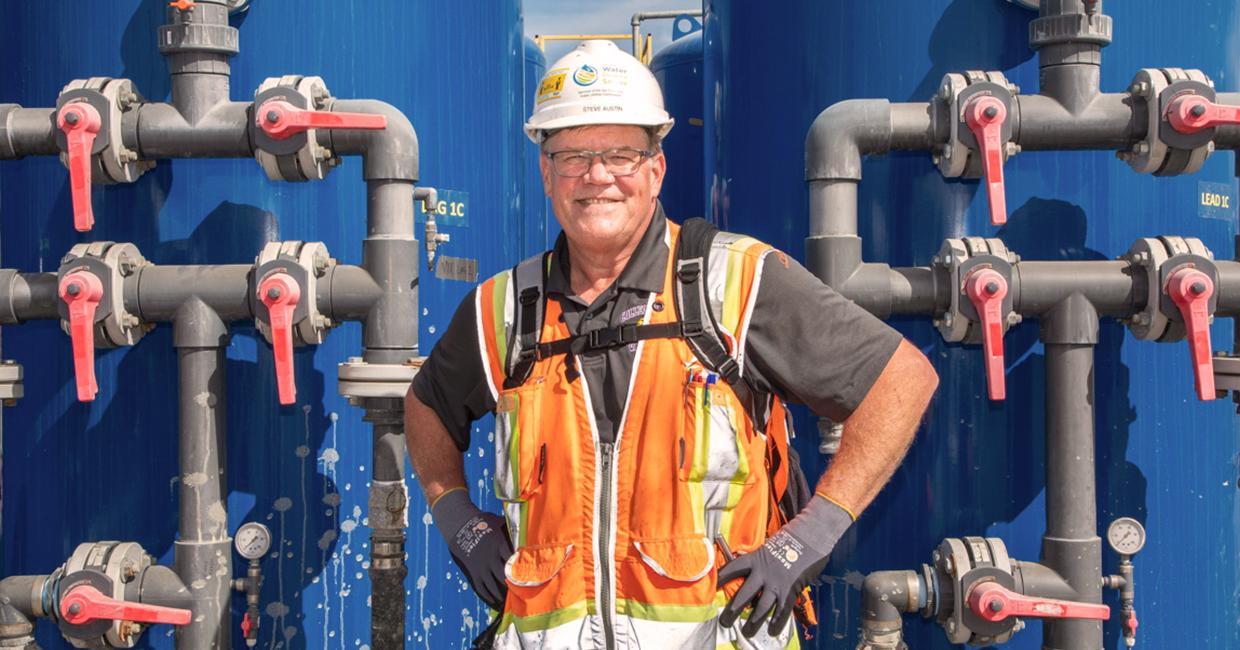
Built in 1952, Southeast Treatment Plant (SEP) is the SFPUC’s largest wastewater treatment facility. Construction at SEP is underway as part of the Sewer System Improvement Project (SSIP), a more than $2-billion-dollar investment to modernize our aging sewer system. When completed, SEP will use cleaner and greener technologies, generate less odors, and be more resilient against earthquakes and sea-level rise.
In compliance with local, state, and federal agencies, crews must minimize construction impact on the environment and surrounding community. These impacts include dust, diesel fumes, noise and even ground vibration.
The Plant is in the Bayview-Hunters Point community, which is already heavily affected by traffic, maritime, and industrial activities. Because of this, it is crucial that construction regulations are followed.
The SFPUC has a team dedicated to making sure construction meets environmental regulations and minimizes impact on the community. The team includes Steve Austin, an Environmental Inspector who has trained over 2,700 people in just three years. Austin is quick to point out he does not work alone. Along with his supervisor, Dorinda Himes, SEP Projects Environmental Construction Compliance Manager, they work closely with SFPUC’s SEP Construction team and Environmental Management Group members

“We all look out for the environment and the impacts this construction has on the community,” says Austin who walks the site every day. On his walk, he talks with the contractor’s personnel and completes an environmental inspection checklist.
Through training, Austin shares the reason and purpose of the environmental requirements. He feels that when people understand the value of these protections, they are more likely to do their part. An example of this responsibility is using “clean” construction equipment (a city code for public projects to reduce air emissions at construction sites) and renewable diesel. Ausint keeps records of the equipment on-site and notifies crews when he sees machines out of compliance.
For the past 10 years, Austin has worked in various capacities in the environmental field as an inspector, technician, and as a maintenance manager for groundwater and soil vapor extraction treatment systems. He holds a Bachelor of Science degree in Agricultural Business Management from California Polytechnic State University, San Luis Obispo.
Early on in his environmental career, Austin says he found there was a lot to learn. “The amount of environmental regulatory and technical information out there is massive -- and the requirements grow more complex every day.”

“Contractors are getting more proactive,” says Austin. “Some now provide their own environmental compliance staff.” He adds that SEP projects and contractors are now allocating more time and resources to cover the required amount of environmental documentation they need to do (e.g., providing equipment inventories and air monitoring reports).
Austin is grateful for the opportunity to work at the SEP construction sites doing his part because it broadens his understanding of infrastructure construction. “I really enjoy knowing that my work can make a difference,” says Austin, “and I’ve seen other people really appreciate that too.”
When asked to summarize his approach to his work, there is a long pause, “We have a responsibility to our co-workers, our community and our environment.” Austin gives it one last thought, “We care.”


